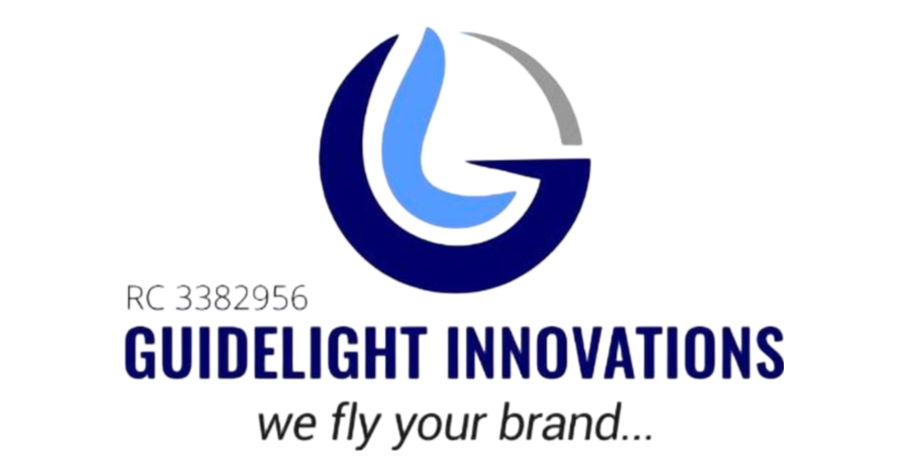In business, relationships, and life, first impressions carry disproportionate weight. A client meeting, job interview, investor pitch, or networking encounter can be decided in the first few seconds—often before you’ve finished your opening sentence. While conventional wisdom offers advice about firm handshakes and eye contact, modern psychology and neuroscience reveal a far more nuanced picture of how humans form rapid judgments about one another. For business owners, entrepreneurs, and professionals, understanding what people actually notice—and why it matters—provides crucial advantages in everything from sales to leadership to talent acquisition.
The Speed of Judgment: Decisions Made in Milliseconds
Research consistently demonstrates that humans form initial impressions with remarkable speed. Princeton psychologist Alexander Todorov’s groundbreaking studies show that people make judgments about trustworthiness, competence, likability, and aggressiveness from facial appearance alone in as little as 100 milliseconds—one-tenth of a second. Longer exposure times increase confidence in these judgments but rarely change the conclusions themselves.
This lightning-fast assessment isn’t superficial snap judgment—it reflects deep evolutionary programming. Our ancestors needed rapid friend-or-foe determinations for survival. The neural machinery for making these assessments operates largely unconsciously, processing enormous amounts of information about facial features, body language, vocal qualities, and contextual cues before conscious awareness registers.
The implications for business interactions prove profound. By the time you’ve introduced yourself and begun your pitch or conversation, listeners have already formed preliminary conclusions about your trustworthiness, competence, and likability. These initial judgments create perceptual filters that influence how subsequent information is interpreted. Strong first impressions allow your message to be received openly; weak ones require overcoming skepticism and bias.
Neuroscience reveals that first impressions activate the amygdala—the brain’s emotional and threat-detection center—more strongly than subsequent interactions. This heightened emotional processing means first impressions get encoded into memory more deeply than later information, making them particularly resistant to change. The primacy effect in psychology confirms that information encountered first carries disproportionate weight in overall evaluation.
For professionals, this reality shouldn’t create pressure for perfection but rather awareness of opportunity. The first moments of any interaction represent concentrated influence over how you’ll be perceived. Small, strategic adjustments to what you consciously control during these critical moments generate outsized returns on perception and outcomes.
Facial Features: The Judgments We Can’t Control
Before you speak, before you gesture, before you do anything intentionally, your facial structure communicates messages that shape how others perceive you. Research in face perception reveals that certain facial features trigger consistent judgments across cultures, ages, and contexts—judgments that prove remarkably resistant to contradicting information.
Facial width-to-height ratio correlates with perceptions of dominance and aggressiveness. Faces with wider structures relative to height get perceived as more dominant, assertive, and competitive. This bias affects everything from CEO selection to criminal sentencing, with broader-faced individuals receiving both benefits and penalties depending on context. Athletes with higher facial width-to-height ratios demonstrate greater performance in competition, possibly because dominance perceptions create self-fulfilling prophecies.
Facial maturity influences perceived competence and trustworthiness. Baby-faced features—larger eyes, higher eyebrows, smaller nose and chin—trigger perceptions of warmth, honesty, and trustworthiness but reduced competence and authority. Mature facial features produce opposite effects. These biases influence judicial decisions, electoral outcomes, and hiring choices despite having no actual relationship to the qualities they supposedly signal.
Facial symmetry affects attractiveness and perceived health. Humans show strong preferences for symmetrical faces, which are unconsciously interpreted as indicators of genetic quality and health. While correlation between facial symmetry and actual health remains debated, the perceptual bias proves robust. More attractive individuals receive benefits across domains—higher initial salaries, more favorable performance evaluations, and greater persuasive influence.
For business professionals, awareness of these biases serves multiple purposes. First, understanding that certain judgments stem from facial structure rather than your actions or qualities provides psychological relief—not everything about first impressions reflects controllable choices. Second, awareness of how your particular facial features likely influence perception enables strategic compensation. If baby-faced, you might emphasize credentials and expertise early. If appearing dominant, you might consciously project warmth.
Third, recognition of these biases in yourself enables more conscious evaluation of others. The CEO candidate with a mature, dominant facial structure isn’t necessarily more competent than the baby-faced alternative. The trustworthy-appearing partner might be neither more nor less honest than the one triggering suspicion based on facial features. Conscious awareness of these biases provides opportunity to override them with deliberate evaluation of actual relevant information.
Body Language: The Messages You’re Sending Without Words
While facial structure remains largely fixed, body language represents one of the most powerful controllable elements of first impressions. Research indicates that nonverbal communication typically carries more weight than verbal content, with some estimates suggesting nonverbal cues account for over 60% of interpersonal communication impact.
Posture communicates status, confidence, and energy before you’ve spoken. Expansive postures—standing tall, shoulders back, taking up space—signal confidence, competence, and status. Contracted postures—shoulders hunched, arms crossed, minimal space occupation—signal insecurity, defensiveness, or low status. Amy Cuddy’s research on power posing demonstrated that adopting expansive postures doesn’t just change how others perceive you; it changes your own psychology, increasing confidence and risk tolerance.
However, recent replications of power posing research have produced mixed results, with some studies failing to find the originally reported psychological effects. The perceptual effects on observers remain more consistently documented than the internal psychological changes. Regardless of the mechanism, adopting confident posture clearly influences how others perceive you during first encounters.
Gesture patterns reveal engagement, enthusiasm, and communication style. Animated gesturing signals passion and engagement but can be perceived as nervousness or lack of control if excessive. Minimal gesturing can appear calm and authoritative but risks seeming disengaged or uninteresting. Cultural norms significantly influence optimal gesture patterns, with Mediterranean and Latin cultures favoring more expressive gesturing than Northern European or Asian cultures.
Proxemics—the use of personal space—communicates relationship intentions and cultural awareness. Standing too close violates personal space and triggers discomfort or threat responses. Maintaining too much distance signals coldness or disinterest. Optimal distance varies by culture, relationship type, and context. North American professional interactions typically occur at 4-7 feet (social distance), while intimate or personal conversations occur at 1.5-4 feet. Violating these unspoken norms creates immediate negative impressions.
For business applications, body language awareness enables strategic presentation. Client meetings benefit from open postures, appropriate distance, and engaged but not excessive gesturing. Presentations to large groups benefit from confident stance and purposeful movement. Negotiations might strategically vary body language based on whether you’re building rapport or establishing boundaries.
The key insight is that body language operates largely outside conscious awareness for both sender and receiver. You might not realize you’re crossing arms or hunching shoulders, and observers might not consciously notice these signals, yet they significantly influence perception. Video recording yourself in professional contexts reveals body language patterns you don’t consciously recognize, enabling targeted improvement.
Vocal Qualities: It’s Not What You Say, It’s How You Say It
Voice carries remarkable information about personality, status, emotional state, and credibility—information that shapes first impressions powerfully and immediately. Research demonstrates that vocal characteristics often outweigh verbal content in determining persuasiveness and likability.
Vocal pitch influences perceived competence and trustworthiness in complex, gender-specific patterns. Lower-pitched voices in both men and women correlate with perceptions of competence, authority, and leadership capability. Male political candidates with lower voices receive more votes. CEOs with deeper voices run larger companies and earn higher salaries. However, the relationship with trustworthiness proves more nuanced, with moderate pitch often perceived as most trustworthy.
Speech rate affects credibility and perceived intelligence. Faster speakers are generally perceived as more competent, intelligent, and confident compared to slower speakers, up to a point. Extremely fast speech can trigger perceptions of nervousness or slickness. Optimal speech rate typically falls between 160-180 words per minute for most contexts, though presentation style and content complexity influence ideal pacing.
Vocal variability—changes in pitch, volume, and pacing—signals engagement and interest. Monotone delivery, regardless of content quality, triggers perceptions of boredom, disengagement, or lack of confidence. Varied vocal dynamics maintain listener attention and communicate passion and authenticity. Radio broadcasters and professional speakers develop highly variable vocal patterns precisely because this variability commands attention and conveys authority.
Vocal fillers—”um,” “uh,” “like,” “you know”—significantly degrade perceptions of competence and preparation. Research shows that even moderate filler word usage substantially reduces perceived credibility and expertise. Audiences often don’t consciously count filler words but register an overall impression of uncertainty or lack of polish. Eliminating or dramatically reducing fillers represents one of the highest-return investments in first impression management.
For business professionals, vocal awareness enables strategic development. Recording presentations or phone calls reveals patterns invisible in real-time. Speech coaches can address specific issues like excessive fillers, monotone delivery, or inappropriate pace. Simple techniques like pausing instead of filling silence with “um” immediately enhance perceived competence.
Telephone and video calls present particular challenges because vocal qualities carry even greater weight without full visual information. Phone voices benefit from slightly increased animation compared to in-person communication to compensate for missing visual cues. Video calls require awareness that computer microphones and speakers may distort natural voice qualities, affecting how you’re perceived.
Appearance and Grooming: The Role of Presentation
Personal appearance represents one of the most obvious and controllable first impression elements, yet research reveals that its impact operates through more sophisticated mechanisms than simple attractiveness judgments.
Dress appropriateness matters more than dress quality. Wearing a $5,000 suit to a startup pitch might generate negative impressions, while business casual generates positive ones—not because the suit is too formal but because it signals misunderstanding of cultural context. Similarly, casual dress at a corporate law firm interview signals either ignorance or disrespect regardless of the clothing’s quality or cost.
The key principle involves contextual calibration. Appropriate dress slightly exceeds the expected standard without dramatically overshooting it. For client meetings, dress one level more formally than you expect clients to dress. For team management, dress consistently with or slightly above team norms. The goal isn’t maximum formality but rather situational appropriateness that signals awareness and respect.
Color psychology influences perception, though effects are often overstated. Dark colors (navy, black, charcoal) generally convey authority and professionalism. Lighter colors convey approachability and warmth. Bright colors command attention but can appear unprofessional in conservative contexts. These associations vary by culture, with color meanings in Asian contexts often differing from Western interpretations.
Grooming standards communicate conscientiousness and respect. Well-maintained appearance signals that you value the interaction and respect the other party’s time and attention. This doesn’t require expensive products or treatments—basic cleanliness, neat hair, and appropriate hygiene practices satisfy expectations in most professional contexts. The threshold is lower than many assume, with most negative impressions stemming from obviously inadequate rather than insufficiently excellent grooming.
For business owners and entrepreneurs, understanding that appearance judgments operate largely through cultural signaling rather than absolute standards provides strategic clarity. Investment in appearance should focus on appropriate contextual signaling rather than maximum quality. A well-fitted $200 suit appropriate for your industry and role typically generates better impressions than an ill-fitting $2,000 suit.
Personal style and authenticity balance against appropriateness requirements. Completely suppressing personal style to match imagined expectations can appear inauthentic or uncomfortable. The optimal approach integrates personal style elements within appropriate frameworks. Creative industry professionals might express individuality through accessories, colors, or styling within professional quality standards. Traditional industry professionals might express personality through subtle details rather than dramatic departures from norms.
Conversational Patterns: The Dance of Early Dialogue
Once verbal interaction begins, conversational patterns immediately reveal social intelligence, emotional state, and relationship intentions. Research in conversation analysis identifies specific patterns that enhance or undermine first impressions.
Active listening signals respect, interest, and emotional intelligence. This involves more than remaining silent while others speak—it requires demonstrating attention through nonverbal feedback (nodding, facial expressions), relevant follow-up questions, and verbal acknowledgment. People who demonstrate strong listening skills consistently receive higher likability and trustworthiness ratings compared to those who dominate conversation or appear disengaged.
Conversational balance affects perception of social awareness and consideration. Hogging conversation creates negative impressions regardless of content quality. Excessive passivity can signal disinterest or lack of confidence. Research suggests optimal conversational balance in professional contexts involves speaking 40-60% of the time, with adjustment based on relative status and conversational purpose. In sales contexts, the often-cited “80/20 rule” (listen 80%, talk 20%) proves oversimplified, with optimal balance varying based on sales stage and product complexity.
Question quality demonstrates intelligence and genuine interest. Thoughtful questions based on previous responses signal active engagement and curiosity. Generic questions asked without regard to prior conversation suggest disinterest or social incompetence. Open-ended questions generally generate more positive impressions than yes/no questions because they demonstrate interest in nuanced understanding rather than superficial information gathering.
Self-disclosure patterns influence perceived authenticity and trustworthiness. Appropriate vulnerability and personal sharing build connection and trust. However, excessive self-disclosure—particularly negative information or inappropriate intimacy—creates discomfort and negative impressions. Optimal self-disclosure involves reciprocity: matching the depth and type of personal information shared by conversation partners rather than either significantly exceeding or falling short of their disclosure level.
For business applications, conversational awareness enables strategic relationship building. Sales professionals should focus on customer-centric questions and active listening rather than product-focused monologues. Networking contexts benefit from balanced conversation with appropriate self-disclosure that builds connection without oversharing. Leadership interactions might intentionally vary patterns based on whether you’re building rapport, conveying authority, or developing subordinates.
The Halo Effect: When One Trait Colors Everything
One of the most powerful mechanisms through which first impressions influence ongoing perception involves the halo effect—the tendency for one prominent characteristic to influence judgments about unrelated characteristics. Research demonstrates that halo effects significantly distort evaluations across contexts from hiring to performance reviews to interpersonal relationships.
Physical attractiveness creates powerful halo effects. Attractive individuals are consistently rated as more intelligent, competent, friendly, and honest compared to less attractive individuals, even when objective evidence suggests no difference. These biases affect earnings, hiring decisions, criminal sentencing, and countless other outcomes. The mechanism operates largely unconsciously, with evaluators often denying that appearance influenced their judgments even when evidence clearly shows it did.
Perceived confidence generates halo effects around competence. Individuals who appear confident—through posture, voice, and manner—get judged as more competent even when confidence level correlates weakly with actual ability. This explains why confident incompetents often succeed over competent individuals who appear uncertain. The bias proves particularly strong when evaluators lack expertise to assess actual competence, forcing reliance on confidence as a proxy.
Similarity creates positive halo effects. People who share characteristics with evaluators—background, interests, demographics, or communication style—receive more favorable judgments across dimensions. Hiring managers favor candidates similar to themselves. Investors fund entrepreneurs who remind them of themselves. This similarity bias operates even on trivial shared characteristics like names or birthdays.
For business professionals, halo effect awareness serves defensive and offensive purposes. Defensively, awareness that you’re susceptible to halo effects enables more deliberate evaluation that separates distinct qualities. The confident job candidate may not actually be more competent. The attractive vendor may not offer better value. Conscious evaluation of specific relevant factors rather than overall impression improves decision quality.
Offensively, understanding halo effects enables strategic presentation. Leading with your strongest qualities maximizes halo effects that improve perception of other dimensions. If your greatest strength is expertise, establish credibility early so subsequent characteristics benefit from the halo. If your strength is likability, build rapport first so competence claims receive more generous interpretation.
The ethical dimensions of exploiting halo effects deserve consideration. Using halo effects to misrepresent competence or qualities you lack crosses into deception. However, strategically ordering information presentation or emphasizing genuine strengths to receive fair evaluation rather than being disadvantaged by arbitrary factors seems ethically defensible.
Context and Environment: The Overlooked Variables
First impression research often focuses on individual characteristics—your appearance, behavior, and communication. However, contextual and environmental factors significantly influence how these characteristics get interpreted and what impressions form.
Physical environment shapes perception through multiple mechanisms. Meeting in impressive office space versus coffee shop versus casual setting triggers different status and competence inferences. Messy versus organized environments signal conscientiousness or creativity depending on industry. Temperature, lighting, and noise levels affect mood and evaluation, with uncomfortable environments generating more negative impressions regardless of individual behavior.
Social proof and introductions dramatically shape first impressions. Being introduced by a respected figure immediately elevates your perceived credibility and status. Testimonials and credentials displayed in meeting spaces trigger authority heuristics. Conversely, lack of social proof requires building credibility from scratch through direct interaction.
Timing affects impression formation in underappreciated ways. People in good moods rate others more favorably than those in bad moods. Energy levels fluctuate throughout the day, with most people showing peak cognitive function and positivity mid-morning. Scheduling important first meetings during optimal timing windows slightly improves average outcomes.
For business owners controlling meeting environments, strategic environmental design optimizes first impressions. Client meetings in professional, comfortable spaces generate more favorable impressions than cramped or chaotic venues. Displaying credentials, awards, and testimonials provides social proof that enhances perceived expertise. Offering refreshments and ensuring comfort demonstrates consideration that improves evaluation.
When you don’t control the environment, awareness of contextual effects enables appropriate adjustment. An uncomfortable environment may require extra warmth to compensate for the setting’s negative influence. Lack of social proof requires more explicit credential establishment. Poor timing might justify rescheduling if possible or setting appropriate expectations if not.
Digital First Impressions: The New Frontier
Increasingly, first impressions form digitally before any in-person interaction occurs. LinkedIn profiles, company websites, email communications, and video calls each create initial perceptions that shape subsequent interactions.
LinkedIn and professional profile photos trigger rapid judgments similar to in-person encounters. Research shows that profile photos influence perceived competence, likability, and hirability significantly. Optimal professional photos feature genuine smiles, appropriate attire, good lighting, direct eye contact with camera, and simple backgrounds. Group photos, heavily filtered images, or overly casual settings generate less favorable professional impressions.
Email communication style influences perceived competence and personality. Excessive formality can seem stiff or outdated. Excessive casualness can seem unprofessional. Optimal email style matches industry and relationship stage while maintaining professionalism. Response time signals priorities and respect, with very fast responses sometimes suggesting desperation while slow responses suggest disrespect or disinterest.
Video call first impressions combine visual and vocal elements with new technical considerations. Camera angle, lighting, background, and video quality all influence perception. Looking at the camera rather than your own image creates better eye contact impression. Professional, uncluttered backgrounds signal organization. Good lighting prevents unflattering shadows that inadvertently trigger negative responses.
For business professionals, digital first impression management requires specific skill development distinct from in-person competencies. Professional photography for profiles represents worthwhile investment given how frequently these images create first impressions. Email template development ensures consistent professional communication. Home office setup for video calls—good lighting, neutral background, camera positioning—repays investment through improved perception.
Unconscious Bias: The Shadow Side of First Impressions
First impression formation inevitably involves biases—some relatively harmless, others deeply problematic. Understanding these biases enables both personal awareness of your own prejudices and strategic awareness of biases you may encounter from others.
Racial and ethnic bias affects first impressions across virtually all dimensions measured. Research consistently documents discrimination in hiring, lending, housing, criminal justice, and countless other domains based on perceived race and ethnicity. These biases operate even among individuals who consciously reject prejudice, reflecting implicit associations formed through cultural conditioning rather than explicit beliefs.
Gender bias influences first impressions in complex, context-dependent ways. Women face likability penalties for displaying assertiveness that benefits men. Men face competence questions in domains stereotyped as feminine. Both genders encounter biases around leadership, with masculine traits associated with leadership creating advantages for men and disadvantages for women displaying the same traits.
Age bias affects first impressions bidirectionally. Younger individuals face competence and experience questions. Older individuals face assumptions about technological proficiency, energy, or adaptability. Both sets of biases lack empirical foundation but nonetheless influence evaluation and opportunity.
For business leaders, addressing bias in first impression formation requires systematic intervention. Structured interviews with predetermined questions and evaluation criteria reduce bias compared to unstructured conversations where impressions drive hiring decisions. Blind evaluation processes—removing identifying information from resumes or proposals—reduce demographic bias. Diverse hiring panels surface biases that homogeneous groups miss.
Individual awareness of your own biases, while uncomfortable, enables more conscious evaluation. Noticing when you’re making assumptions based on demographics rather than relevant information provides opportunity to consciously override biased impulses. The goal isn’t eliminating unconscious bias—likely impossible given how deeply cultural conditioning operates—but rather developing awareness and correction mechanisms.
Recovering from Bad First Impressions
Despite best efforts, bad first impressions sometimes occur. Understanding whether and how first impressions can be overcome provides both realistic expectations and strategic recovery approaches.
Research presents somewhat pessimistic findings about first impression reversal. The primacy effect means initial information carries disproportionate weight. Confirmation bias causes people to interpret ambiguous subsequent information as confirming rather than contradicting first impressions. Change is possible but requires substantially more positive information than if you’d made a good first impression initially.
However, specific circumstances make first impression recovery more likely. Strong motivation to form accurate impressions—as in important hiring or partnership decisions—increases willingness to revise judgments based on contradicting information. Extended interaction time allows more information accumulation that may override initial judgments. Direct acknowledgment of poor first meeting sometimes resets expectations and allows fresh start.
Strategic recovery from bad first impressions involves several approaches. First, acknowledge the awkward start if appropriate—this demonstrates self-awareness and provides context. Second, provide especially strong performance in subsequent interactions to accumulate positive information. Third, leverage relationships with others who can provide positive information to the person who formed negative first impression. Fourth, be patient—first impression revision requires time and consistent contradicting evidence.
For business contexts, bad first impressions aren’t necessarily fatal but do require recognition and response. The client meeting that went poorly might benefit from follow-up acknowledging the rough start and requesting another conversation. The networking encounter that fell flat might lead to thoughtful email follow-up that provides second chance. The key is recognizing the deficit and making strategic effort to overcome it rather than assuming one interaction determines outcomes.
Practical Application: Mastering First Impressions Strategically
Understanding first impression science enables strategic development rather than leaving crucial moments to chance. Several practical frameworks integrate this knowledge into consistent performance.
Pre-interaction preparation significantly improves first impression outcomes. This includes research about who you’re meeting and appropriate context, mental rehearsal of key messages and desired impression, attention to appearance and grooming, and physiological state management through adequate sleep, food, and stress regulation. High-stakes first impressions justify substantial preparation investment.
Opening moments deserve special attention and practice. The first 30 seconds of any interaction disproportionately influence overall impression. Strong openings combine confident body language, genuine smile, appropriate greeting, firm but not crushing handshake where culturally appropriate, clear introduction with relevant credentials, and engaged presence. Developing consistent, polished opening routines ensures strong starts even under stress.
Continuous improvement through feedback and recording enables ongoing development. Video recording presentations or requesting honest feedback from trusted colleagues reveals patterns you can’t recognize in real-time. Specific, actionable feedback proves most valuable—not “be more confident” but “reduce filler words and pause between thoughts.”
Conclusion: The Strategic Advantage of First Impression Mastery
First impressions represent disproportionately important moments where small investments in awareness and skill development generate outsized returns. The science reveals that while some factors remain beyond your control—facial structure, unconscious biases others hold—many elements of first impressions can be strategically managed through attention to body language, vocal qualities, appearance, conversational patterns, and environmental context.
For business owners, entrepreneurs, and professionals, first impression mastery provides competitive advantages in client acquisition, partnership development, team building, and leadership effectiveness. The client who forms a positive first impression approaches your proposal more openly. The investor who perceives confidence and competence takes your pitch more seriously. The employee who experiences strong leadership presence in first meetings demonstrates greater commitment and trust.
The key insight from first impression science is that perception matters enormously, operates largely unconsciously for both sender and receiver, and can be strategically influenced through specific, learnable behaviors. This isn’t about manipulation or deception—it’s about ensuring your genuine qualities and competencies receive fair evaluation rather than being obscured by arbitrary factors or preventable mistakes.
First impressions will never tell the complete story about anyone. However, in a world where opportunities are won or lost in seconds, where attention is scarce and alternatives abundant, the ability to quickly communicate your value and character through strategic first impression management isn’t superficial—it’s essential.
References
- Ambady, N., & Rosenthal, R. (1993). “Half a Minute: Predicting Teacher Evaluations from Thin Slices of Nonverbal Behavior and Physical Attractiveness.” Journal of Personality and Social Psychology, 64(3), 431-441.
- Carney, D.R., Cuddy, A.J.C., & Yap, A.J. (2010). “Power Posing: Brief Nonverbal Displays Affect Neuroendocrine Levels and Risk Tolerance.” Psychological Science, 21(10), 1363-1368.
- Dion, K., Berscheid, E., & Walster, E. (1972). “What Is Beautiful Is Good.” Journal of Personality and Social Psychology, 24(3), 285-290.
- Olivola, C.Y., & Todorov, A. (2010). “Elected in 100 Milliseconds: Appearance-Based Trait Inferences and Voting.” Journal of Nonverbal Behavior, 34(2), 83-110.
- Rule, N.O., & Ambady, N. (2008). “The Face of Success: Inferences from Chief Executive Officers’ Appearance Predict Company Profits.” Psychological Science, 19(2), 109-111.
- Stirrat, M., & Perrett, D.I. (2010). “Valid Facial Cues to Cooperation and Trust: Male Facial Width and Trustworthiness.” Psychological Science, 21(3), 349-354.
- Thorndike, E.L. (1920). “A Constant Error in Psychological Ratings.” Journal of Applied Psychology, 4(1), 25-29.
- Todorov, A., Mandisodza, A.N., Goren, A., & Hall, C.C. (2005). “Inferences of Competence from Faces Predict Election Outcomes.” Science, 308(5728), 1623-1626.
- Willis, J., & Todorov, A. (2006). “First Impressions: Making Up Your Mind After a 100-Ms Exposure to a Face.” Psychological Science, 17(7), 592-598.
- Zebrowitz, L.A., & Montepare, J.M. (2008). “Social Psychological Face Perception: Why Appearance Matters.” Social and Personality Psychology Compass, 2(3), 1497-1517.
Additional Resources
- Harvard Business Review – Leadership Presence: https://hbr.org/topic/leadership-presence – Research-based articles on developing executive presence and making strong impressions
- Psychology Today – First Impressions: https://www.psychologytoday.com/us/basics/first-impressions – Accessible explanations of first impression psychology with practical applications
- American Psychological Association – Nonverbal Communication: https://www.apa.org/science/about/psa/2006/05/chamorro-premuzic – Professional psychology resources on body language and nonverbal communication
- TED Talks – Body Language and Presence: https://www.ted.com/topics/body+language – Presentations from researchers like Amy Cuddy on nonverbal communication science
- Society for Personality and Social Psychology: https://www.spsp.org – Academic research on person perception, social cognition, and interpersonal dynamics
- LinkedIn Learning – Professional Presence: https://www.linkedin.com/learning/topics/professional-presence – Video courses on developing first impression skills for business contexts
- Science of People: https://www.scienceofpeople.com – Practical application of behavioral science to professional and social interactions
- MIT Sloan Management Review: https://sloanreview.mit.edu – Business research including executive presence, leadership communication, and organizational behavior




